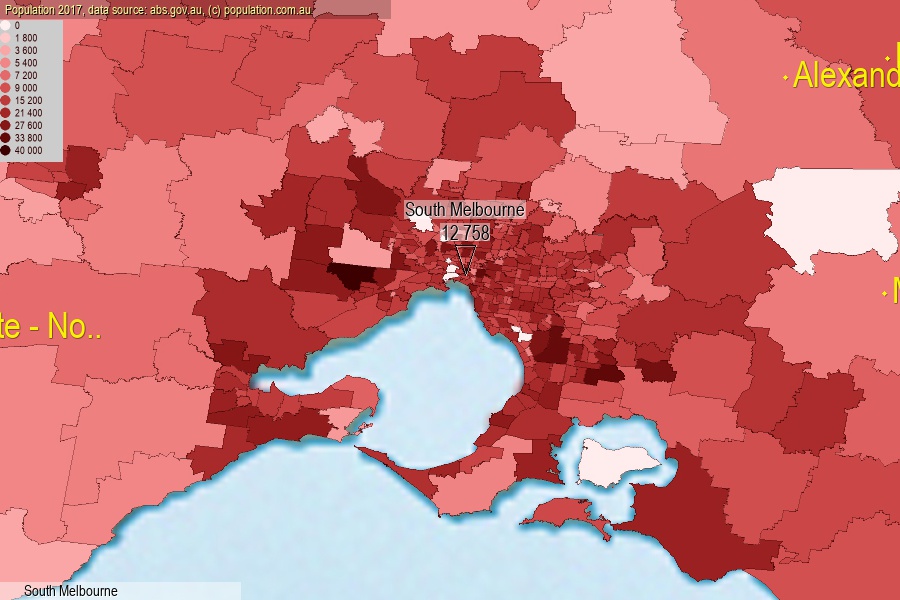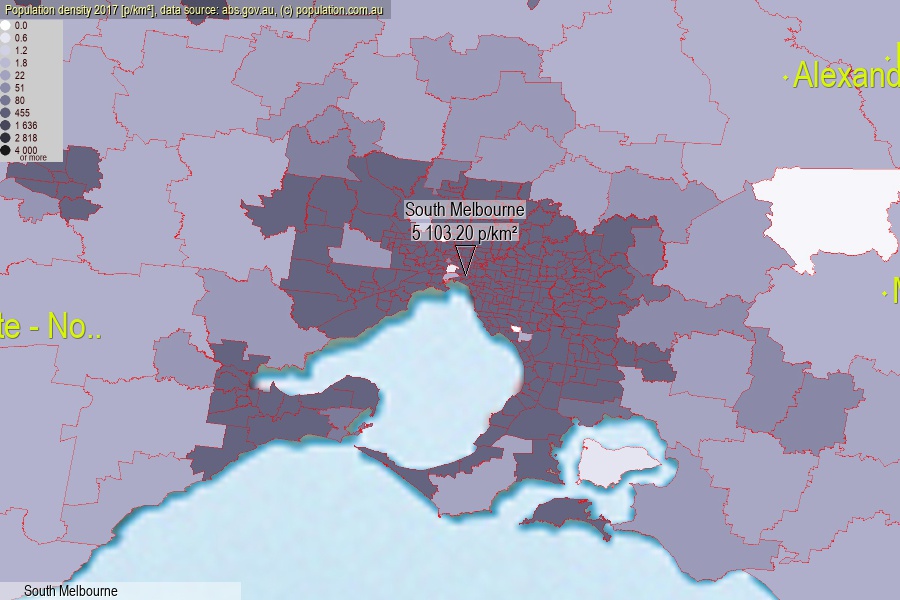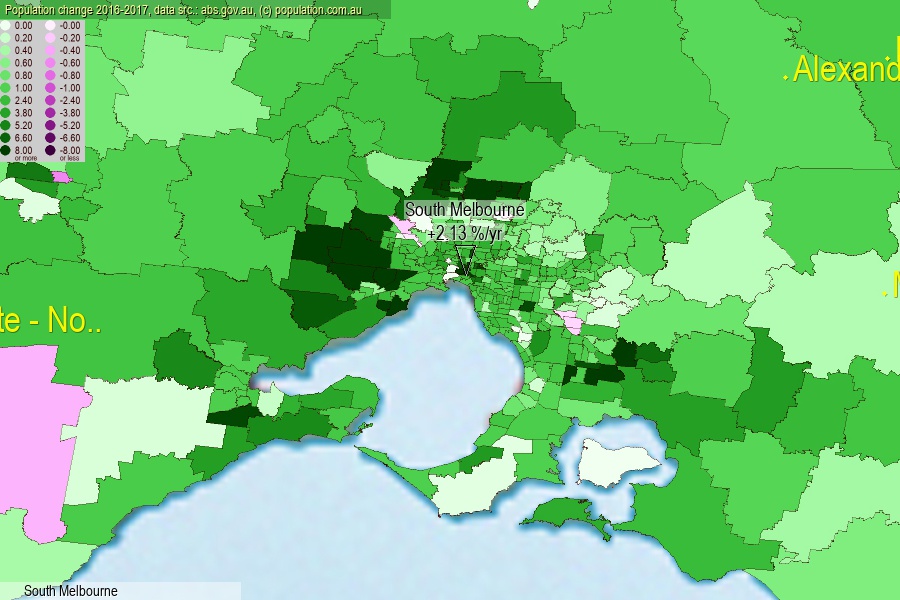 population.com.au
population.com.auLast official estimated population of South Melbourne (as Statistical Area Level 2) was 12 758 people (on 2017-06-30)[2]. This was 0.05% of total Australian population and 0.198% of VIC population. Area of South Melbourne is 2.50 km², in this year population density was 5 103.20 p/km² . If population growth rate would be same as in period 2016-2017 (+2.13%/yr), South Melbourne population in 2025 would be 15 100. [0]



Click to enlarge. South Melbourne is located in the center of the images.
Population [people], population density [p./km²] and population change [%/year] [2]
View borders » (new window) [4]
[1991-1992] -0.03 %/Yr.
[1992-1993] +0.06 %/Yr.
[1993-1994] +0.16 %/Yr.
[1994-1995] 0.00 %/Yr.
[1995-1996] +0.31 %/Yr.
[1996-1997] +1.00 %/Yr.
[1997-1998] +1.75 %/Yr.
[1998-1999] +6.47 %/Yr.
[1999-2000] +12.06 %/Yr.
[2000-2001] +8.61 %/Yr.
[2001-2002] +2.84 %/Yr.
[2002-2003] +2.85 %/Yr.
[2003-2004] +3.92 %/Yr.
[2004-2005] +1.67 %/Yr.
[2005-2006] +1.96 %/Yr.
[2006-2007] +2.51 %/Yr.
[2007-2008] +1.64 %/Yr.
[2008-2009] +2.14 %/Yr.
[2009-2010] +0.55 %/Yr.
[2010-2011] -0.04 %/Yr.
[2011-2012] +5.70 %/Yr.
[2012-2013] +4.84 %/Yr.
[2013-2014] +3.91 %/Yr.
[2014-2015] +2.35 %/Yr.
[2015-2016] +1.95 %/Yr.
[2016-2017] +2.13 %/Yr.
[0] Calculated with linear interpolation from officially estimated population
[1] Read more about SA2 and Australian Statistical Geography Standard (ASGS) on abs.gov.au
[2] Population data from Australian Bureau of Statistics (Population and density: 2017; change: 2016-2017)
[3] Digital Boundaries: Australian Statistical Geography Standard (ASGS) 2016.
[4] Border coordinates are simplifyed using Ramer-Douglas-Peucker algorithm.